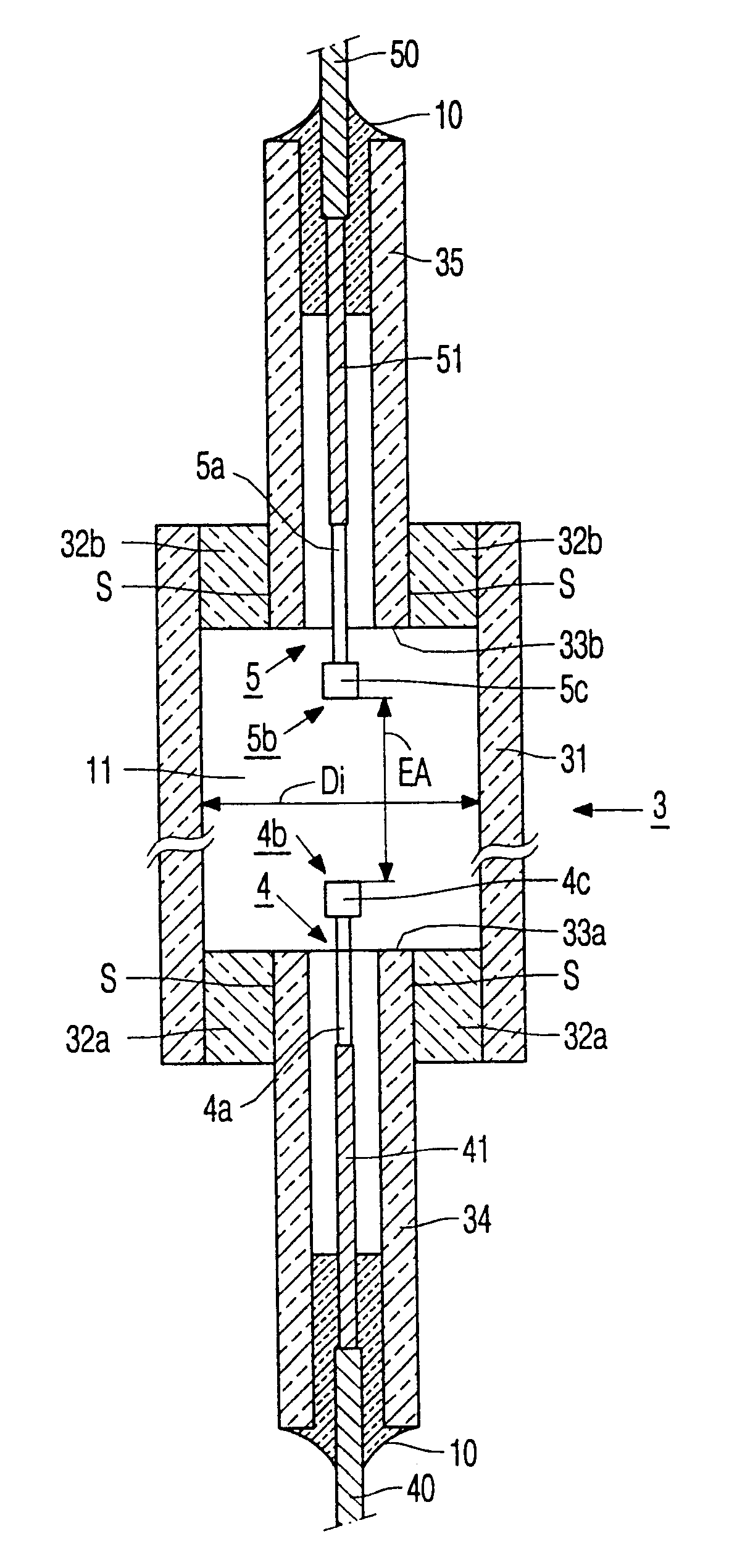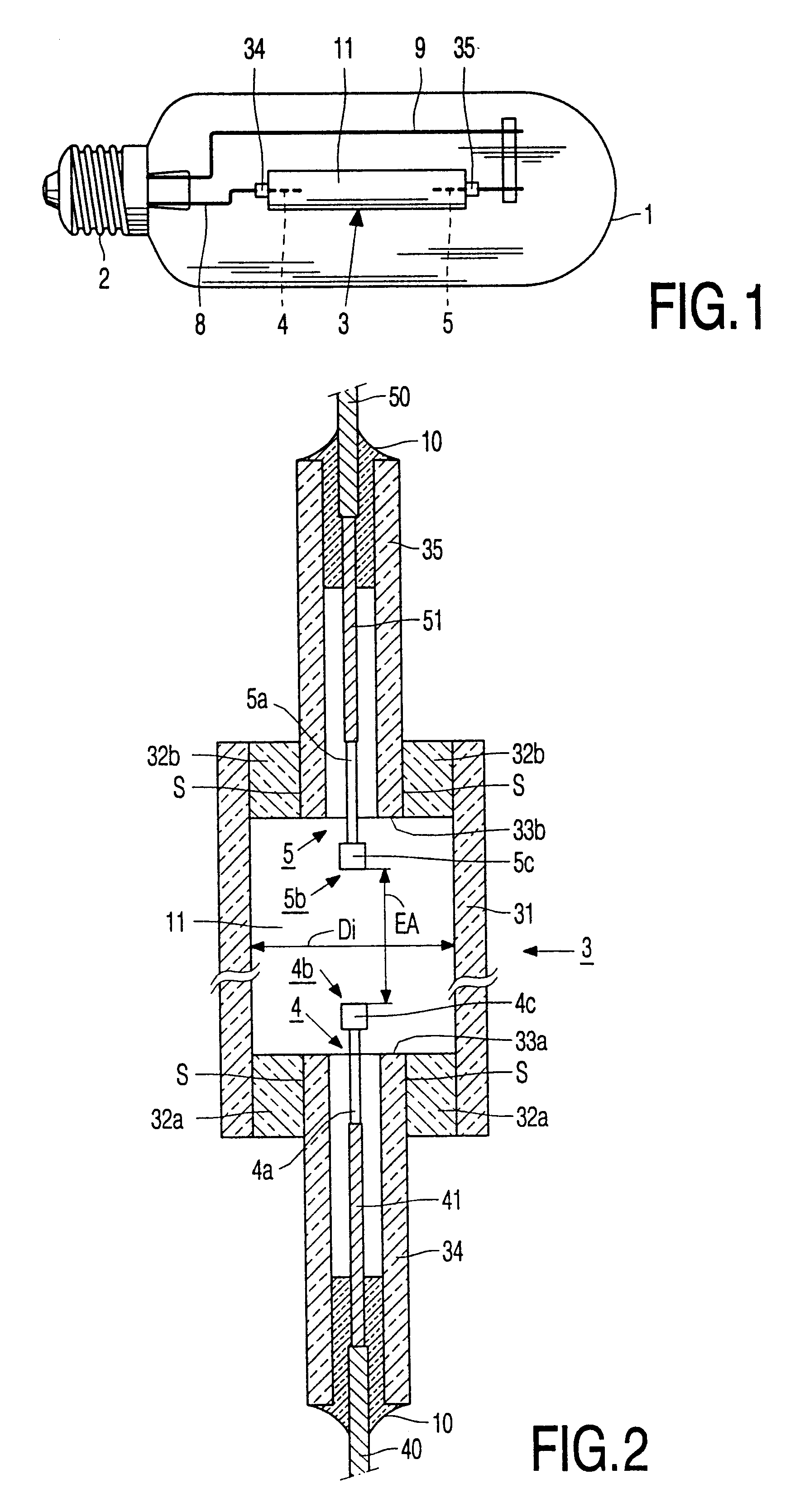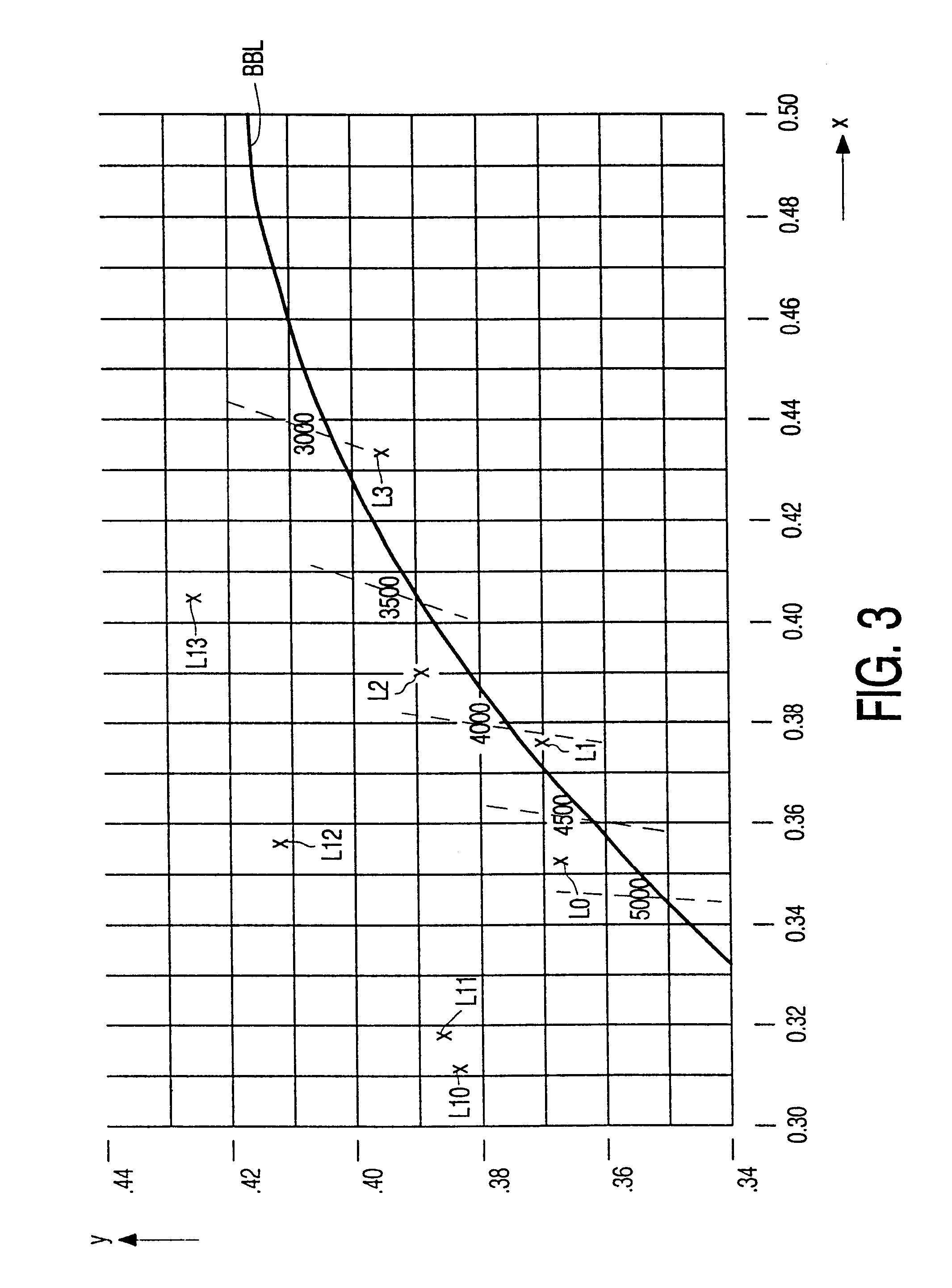Metal halide lamp with lithium and cerium iodide
- Summary
- Abstract
- Description
- Claims
- Application Information
AI Technical Summary
Benefits of technology
Problems solved by technology
Method used
Image
Examples
Embodiment Construction
FIG. 1 shows a metal-halide lamp provided with a discharge vessel 3 having a ceramic wall which encloses a discharge space 11 containing an ionizable filling including at least Hg, an alkali halide and CeI.sub.3. Two electrodes whose tips are at a mutual distance EA are arranged in the discharge space, and the discharge vessel has an internal diameter Di at least over the distance EA. The discharge vessel is closed at one side by means of a ceramic projecting plug 34, 35 which encloses a current lead-through conductor (FIG. 2: 40, 41, 50, 51) to an electrode 4, 5 positioned in the discharge vessel with a narrow intervening space and is connected to this conductor in a gastight manner by means of a melting-ceramic joint (FIG. 2: 10) near to an end remote from the discharge space. The discharge vessel is surrounded by an outer bulb 1 which is provided with a lamp cap 2 at one end. A discharge will extend between the electrodes 4, 5 when the lamp is operating. The electrode 4 is connec...
PUM
 Login to View More
Login to View More Abstract
Description
Claims
Application Information
 Login to View More
Login to View More - R&D
- Intellectual Property
- Life Sciences
- Materials
- Tech Scout
- Unparalleled Data Quality
- Higher Quality Content
- 60% Fewer Hallucinations
Browse by: Latest US Patents, China's latest patents, Technical Efficacy Thesaurus, Application Domain, Technology Topic, Popular Technical Reports.
© 2025 PatSnap. All rights reserved.Legal|Privacy policy|Modern Slavery Act Transparency Statement|Sitemap|About US| Contact US: help@patsnap.com



